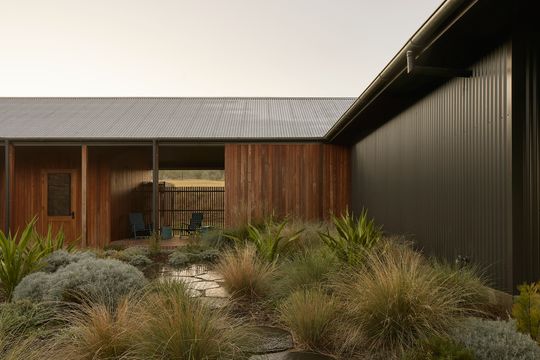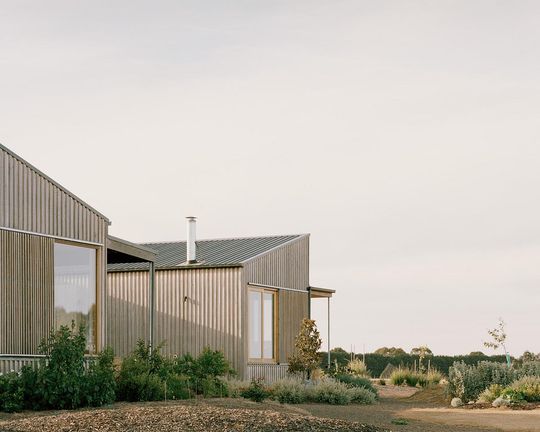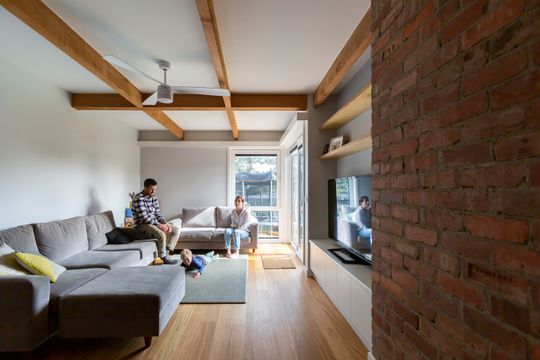Ever thought about how your home could be greener and more sustainable? As environmental concerns grow, sustainable home design is stepping into the spotlight. It’s not just about using eco-friendly materials anymore; it's about creating energy-efficient, water-smart, and beautifully integrated homes that work with nature, not against it. Let’s dive into the exciting world of sustainable home design and see what the future holds.
1. Energy Efficiency: Powering Homes with Less
Imagine a home that stays cosy in winter and cool in summer without racking up huge energy bills. That’s the magic of energy-efficient design!
Passive Solar Design: This is all about making the most of the sun. Think large windows facing north (or south, if you're in the northern hemisphere), thermal mass floors that soak up heat during the day, and smart insulation to keep that warmth in at night.
High-Performance Windows and Insulation: High-tech windows and top-notch insulation keep your home’s temperature just right, cutting down the need for heating and cooling.
Energy-Efficient Appliances and Lighting: Swapping out old appliances for more efficient ones as they need replacing and using LED lighting can make a big difference.
All-electric and Renewable Energy Systems: Solar panels, or even wind turbines, and geothermal systems can help you generate your own clean energy, slashing your reliance on fossil fuels. Switching to all-electric and combining with battery storage where appropriate, you can live entirely off energy you create yourself.

This Passivhaus design transforms an existing house into a highly-efficient and sustainable home.
2. Water Conservation: Every Drop Counts
Water is a precious resource, particularly in Australia, and there are numeorus of ways to use it more wisely in your home.
Low-Flow Fixtures: Low-flow shower heads, taps, and toilets can save a surprising amount of water.
Rainwater Harvesting: Collecting rainwater for your garden or even for flushing toilets is a great way to reduce water use.
Greywater Systems: Reusing water from sinks, showers, and laundry for irrigation helps conserve fresh water.
Drought-Resistant Landscaping: Using native plants that don’t need much water can create beautiful, low-maintenance gardens.

3. Eco-Friendly Materials: Building with the Planet in Mind
Choosing sustainable materials can reduce your home’s environmental impact and create a healthier living space.
Recycled and Reclaimed Materials: Reclaimed wood, recycled metal, and repurposed bricks add character and cut down on waste.
Rapidly Renewable Resources: Materials like bamboo and cork grow quickly and can be harvested sustainably.
Non-Toxic and Low-VOC Products: Low-VOC paints and finishes improve indoor air quality and are better for your health.

This off-grid home uses timber cladding. While it's not recycled, timber is a great, sustainable choice which is low-embodied carbon and is a renewable resource.
4. Healthy Indoor Environments: Designing for Wellbeing
Your home should be a haven for health and wellbeing.
Improved Air Quality: Proper ventilation and air purifiers keep the air fresh and clean.
Natural Light and Views: Large windows and strategic design bring in plenty of natural light and connect you to the outdoors.
Biophilic Design: Incorporating natural elements like plants and water features can reduce stress and enhance your mood.
5. Waste Reduction: Minimising Construction Impact
Building or renovating sustainably means thinking about waste from the get-go. The first step is to avoid building if possible. If you can reuse what you already have, that saves so much waste and precious resources. So look to reuse first.
Building Less: Clever design can help you find ways to better use the space you already have rather than starting from scratch. Similarly, building less floor area and utilising outdoor spaces is a good way to reduce waste (and costs) now and running costs into the future.
Efficient Construction Methods: Modular construction and prefabrication minimise waste and speed up the building process.
On-Site Recycling: Recycling construction debris ensures materials are reused rather than dumped in landfills.
Deconstruction and Reuse: Salvaging materials during renovations reduces waste and can add unique features to your home.

By adding only 21m^2 of floor area, this house was dramatically transformed into a more efficient and sustainable home, reducing waste and reusing what was already there in the process.
6. Thinking of the Future: Planning for Future Flexibility
Investing in the design stage of your new home or renovation gives you a better chance to plan for the future. Create future-thinking spaces so that you don't need to renovate or move later.
Flexible Spaces: Creating spaces that can adapt as your needs change means you won't have to extend/renovate later. Clever and thoughtful design means you can create a home that fits you now and into the future.
Multi-generational Living: Plan for multi-generational living means you'll be well-placed to live comfortably and sustainability, even if a parent moves in or your kids refuse to move out!
Ageing in Place: Similarly, planning for aging in place like accessible spaces, including a bedroom and bathroom on the ground floor, and the ability to install grab rails is a way to create a more sustainable home for you or future owners. Even if you are young and fit, having these features in your home will make it easier for elderly or disabled visitors and will be a blessing if a temporary disability strikes someone in the home.

This multi-generational 'share house' transforms an existing house into an sustainable and light-filled home perfect for a mother and daughter to share without compromising each others' privacy.
7. Community and Location: Thinking Beyond the Home
Sustainable design extends beyond the walls of your home.
Walkable Neighbourhoods: Living in a walkable neighbourhood with access to public transport, schools, and shops reduces the need for driving.
Local Materials: Using materials sourced close to home cuts down on transportation emissions and supports the local economy.
Community Engagement: Involving the community in the design and construction process can foster a sense of ownership and promote sustainability on a broader scale. Even simple things like putting the public areas of the home like the kitchen and living areas facing the street improves engagement with your neighbourhood and creates safer, friendlier places to live.
Sustainable home design is about more than just going green. It’s about creating homes that are energy-efficient, water-smart, healthy, and beautifully integrated with their surroundings. By embracing these principles, you’re not only building a better home for today but also contributing to a more sustainable future for generations to come.